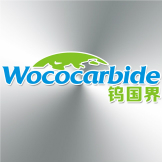Remember that the main purpose of the contact tip is to transfer welding current to the wire. To do that the tip must make good electrical contact with the wire. The curve in the filler wire from the wire cast helps. It acts like a spring to keep the wire in contact with the contact tip, but if the hole in the tip is too large, you lose contact intermittently. If this happens, you’ll begin to see more burnbacks.
On the other hand, if the hole is too small, you’ll also have feeding difficulties. You can’t feed a 0.0468-in. wire through an 0.0468-in. hole. The hole diameter must be somewhat bigger than the wire diameter so that the wire feeds relatively smoothly through the hole. How much bigger? In my experience, the right hole diameter for feeding aluminum wire is 0.008 in. to 0.009 in. larger than the actual wire diameter. A clearance of 0.015 in. is too large.
So why do manufacturers make separate tips for feeding steel and aluminum wire? There are a couple of reasons. First, the standard size for aluminum wire is 0.0468 in., while that for steel wire is 0.045 in. The aluminum wire actually is slightly bigger in diameter than the steel wire. Second, the coefficient of expansion for aluminum is larger than that for steel, so the aluminum wire expands more as it is heated. So manufacturers make the bore size in contact tips made for aluminum slightly larger.
A popular misconception is that you need a larger contact tip for feeding 4043 than for feeding 5356 because 4043 expands more when it is heated. Actually, the coefficient of thermal expansion of 5356 is higher than that of 4043, but they’re close enough that you generally can use the same contact tip for both.
[
More ]
[
Close ]
reply
 0861803284
0861803284

